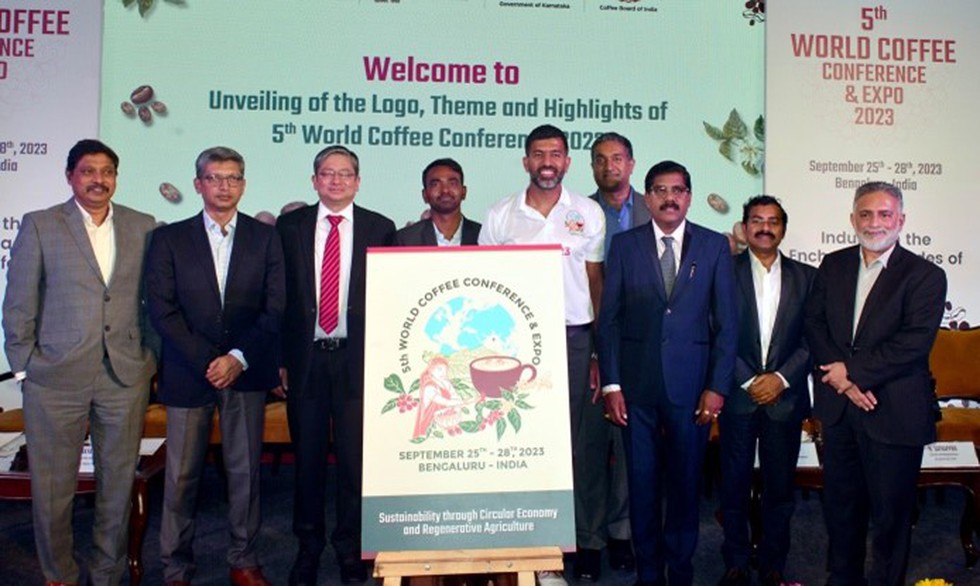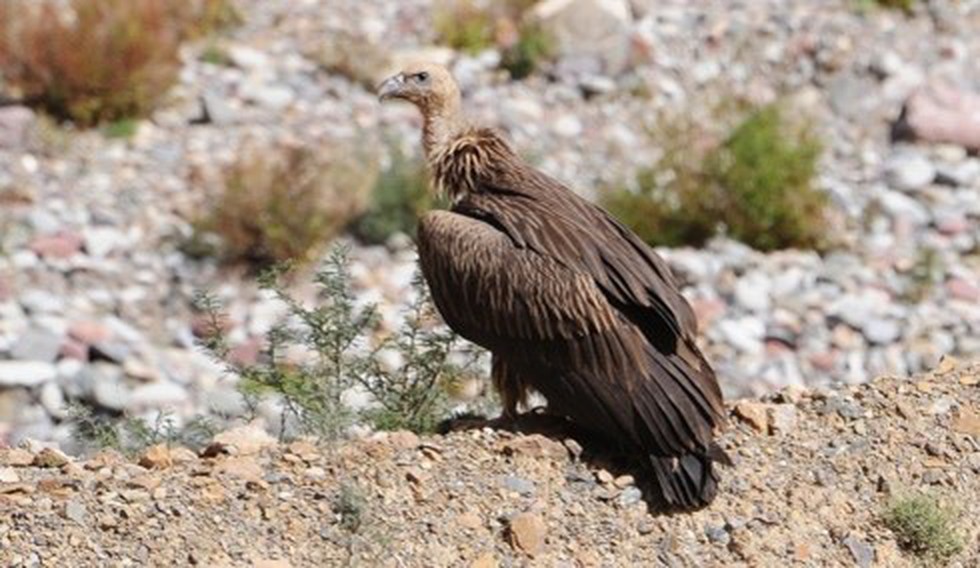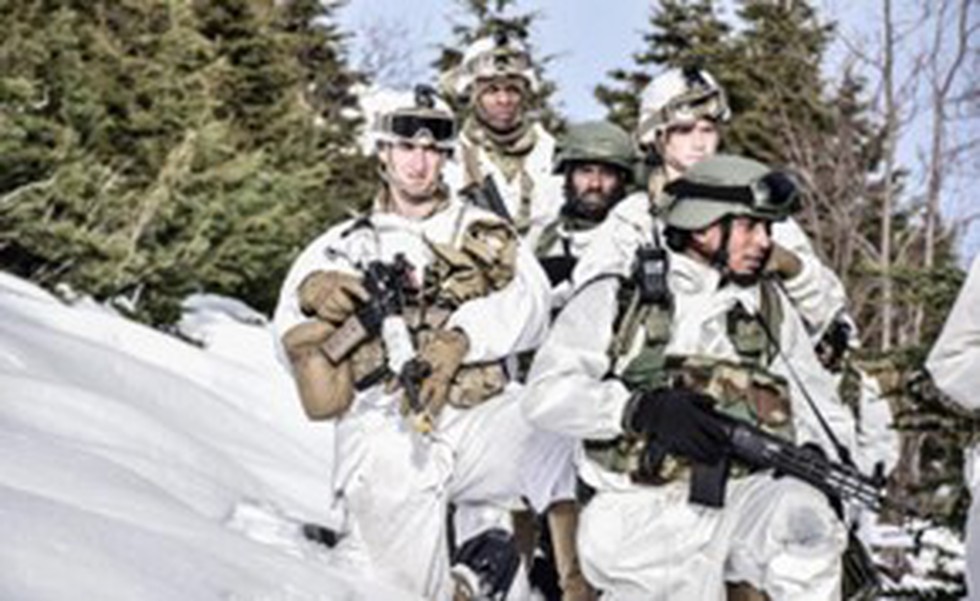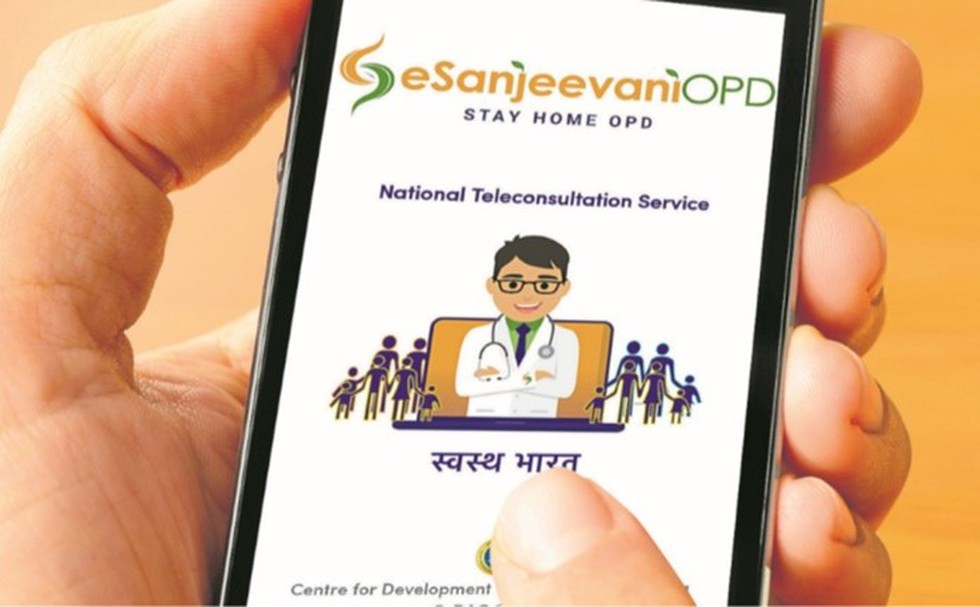
About ZARTH App:
- The ZTF Augmented Reality Transient Hunter ( ZARTH) is built along the lines of the augmented reality mobile game.
- It allows the user to do serious science while playing a game.
- Features
- The app uses the open-source Sky Map and adds data daily from the Zwicky Transient Facility (ZTF)’s robotic telescope at the Palomar Observatory in California.
- Palomar is also home to one of the oldest, largest, and most powerful telescopes in the world: the 200-inch Hale reflector.
- The ZTF scans the entire northern sky every two days and uses the data to make large area sky maps that have important applications in tracking near-earth asteroids and studying supernovae.
- The app is loaded daily with transients detected in real-time by the ZTF.
- The transients include flaring stars (variable stars that flare up for a short while), white dwarf binaries (burnt remains of dead stars that orbit one another and often merge and explode in supernovae), active galactic nuclei, and several other types.
- The app ranks transients by their rarity and importance, and players can compete with each other to score points and earn daily credits, which are duly listed on the leaderboards.
What is a Transients phenomenon?
- Transients refer to astronomical phenomena with durations of fractions of a second to weeks or years.
- Typically they are extreme, short-lived events associated with the total or partial destruction of an astrophysical object.

About World Coffee Conference:
- It is the first time India is hosting the conference.
- The earlier editions of WCC were held in London (2001), Brazil (2005), Guatemala (2010), and Ethiopia (2016).
- The event, is to be jointly organised by the Coffee Board, the Ministry of Commerce and Industry and International Coffee Organisation.
- Mascot of the conference: Coffee Swami
- Theme: Sustainability through Circular Economy and Regenerative Agriculture.
Key facts about International Coffee Organisation
- It is a body set up in 1963 under the auspices of the United Nations to boost the economic importance of coffee globally.
- It is the only inter-governmental organisation for coffee and represents 93% of world coffee production and 63% of world consumption.
- India is a member of this organisation.
Key facts about Coffee cultivation
- The vast majority of the world’s coffee comprises two species — Coffea Arabica(Arabica) and Coffea Canephora (Robusta).
- Climatic conditions required for coffee production
- Climate: Hot and humid climate for its growth.
- Temperature: Ranging between 15°C and 28 °C
- Rainfall:150 to 250 cm.
- Soil: Well-drained, loamy soil containing a good deal of humus and minerals like iron and calcium are ideal for coffee cultivation.
- It is generally grown under shady trees.
- Dry weather is necessary at the time of ripening of the berries.
- It is grown on hill slopes at elevations from 600 to 1,600 metres above sea level.
- Coffee growing states in India: Karnataka, Kerala, Tamil Nadu, Andhra Pradesh and Odisha, among which, Karnataka produces the most with over 70% of the total output.

About Gender Inclusion Fund (GIF):
- The fund will be utilised to ensure that all kids receive a high-quality education.
- It will also be used to guarantee that amenities such as secure and sanitary vending machines are included on GIF’s infrastructure checklist.
- The NEP focuses on ‘Equitable and Inclusive Education’ which reverberates the idea that no child should be left behind in terms of educational opportunity because of their background and socio-cultural identities.
- It has taken into account the concerns of the Socio-Economically Disadvantaged Groups (SEDGs) which includes female and transgender individuals.
- NEP prescribes to approach gender as a cross-cutting priority to achieve gender equality in education with the partnership of states and local community organizations.
- The objectives of NEP for equitable and quality education for girl children are being met through specific provisions under Samagra Shiksha 2.0 by allocating dedicated resources for Socio-Economically Disadvantaged Groups (SEDGs).
- Under Samagra Shiksha, various interventions have been targeted for providing quality education to girls, which include:
- Opening of schools in the neighbourhood to make access easier for girls,
- Free uniform and text-books to girls up to class VIII,
- Additional teachers and residential quarters for teachers in remote/hilly areas,
- Appointment of additional teachers including women teachers,
- Stipend to CWSN girls from class I to class XII, separate toilets for girls,
- Teachers' sensitization programmes to promote girls participation,
- Gender-sensitive teaching-learning materials including text books etc.
- To reduce gender gaps at all levels of school education, Kasturba Gandhi Balika Vidyalayas (KGBVs), which are residential schools from class VI to XII for girls belonging to disadvantaged groups such as SC, ST, OBC, Minority and Below Poverty Line (BPL), are sanctioned in Educationally Backward Blocks.

About Infrastructure investment trust (InvIT):
- It is Collective Investment Scheme similar to a mutual fund, which enables direct investment of money from individual and institutional investors in infrastructure projects
- These are like mutual funds in structure which can be established as a trust and registered with Sebi.
- An InvIT has 4 parties namely; Trustee, Sponsor(s) and Investment Manager and Project Manager.
- While the trustee (certified by Sebi) has the responsibility of inspecting the performance of an InvIT, sponsor(s) are promoters of the company that set up the InvIT.
What is NHAI InvIT?
- It is the infrastructure investment trust sponsored by the National Highways Authority of India (NHAI) to support the government’s National Monetisation Pipeline (NMP).
- It is a Trust established by NHAI under the Indian Trusts Act, 1882 and SEBI (Security and Exchange Board of India) regulations.
Key facts about National Highways Authority of India
- It was constituted by an Act of Parliament in 1988 under the administrative control of the Ministry of Road Transport and Highways.
- It has been set up as a Central Authority to develop, maintain and manage the National Highways entrusted to it by the Government of India.
- The Authority consists of a full-time Chairman and not more than five full-time Members and four part-time Members who are appointed by the Central Government.

Why in news?
- It is the second instance (First was in France) in the world and first in India where this species has been kept for breeding.
- The captive breeding was a joint project undertaken by the Bombay Natural History Society (BNHS) and the Assam forest department
About Himalayan vulture:
- The Himalayan vulture (Gyps himalayensis ) or Himalayan griffon vulture is an Old World vulture.
- It is one of the two largest Old World vultures and true raptors.
- It is a typical vulture which has a bald white head, wings that are very wide and short tail feathers.
- Distribution: It is native to the Himalayas and the adjoining Tibetan Plateau and also found in the Central Asian mountains.
- These are diurnal and mostly solitary species.
- Conservation status
- IUCN: Near Threatened
- Other Vulture species found in India
- India is home to 9 species of Vulture namely the Oriental white-backed, Long-billed, Slender-billed, Himalayan, Red-headed, Egyptian, Bearded, Cinereous and Eurasian Griffon.

About Bureau of Civil Aviation Security (BCAS):
- It was initially set up as a Cell in the Directorate General of Civil Aviation in January 1978 on the recommendation of the Pande Committee, constituted as a reaction to the hijacking of the Indian Airlines flight on 10th September 1976.
- It was reorganized into an independent department under the Ministry of Civil Aviation on 1st April 1987.
- The aim of BCAS is to safeguard civil aviation operations against acts of unlawful interference.
- The main responsibilities of BCAS include laying down standards and measures with respect to the security of civil flights at international and domestic airports in India.
- It is the authoritarian unit for civil aviation security in India. It is controlled by an officer of the rank of Director General of Police and is designated as Commissioner of Security.
- Headquarters: New Delhi
- It has got four Regional Offices located at international airports i.e., Delhi, Mumbai, Kolkata and Chennai.
- Functions:
- Laying down Aviation Security Standards in accordance with Annex 17 to the Chicago Convention of International Civil Aviation Organization (ICAO) for airport operators, airline operators, and their security agencies responsible for implementing AVSEC measures.
- Monitoring the implementation of security rules and regulations and carrying out a survey of security needs.
- Ensure that the persons implementing security controls are appropriately trained and possess all competencies required to perform their duties.
- Planning and coordination of Aviation security matters.
- Surprise/Dummy checks to test the professional efficiency and alertness of security staff.
- Mock exercise to test the efficacy of Contingency Plans and operational preparedness of the various agencies.
What is the Chicago Convention?
- The Chicago Convention (also known as the Convention on International Civil Aviation), established the International Civil Aviation Organisation (ICAO), a specialized agency of the United Nations charged with coordinating and regulating international air travel.
- The Convention was signed by 52 states on 7th December 1944 in Chicago, U.S., and came into effect on 4 April 1947.
- It establishes rules of airspace, aircraft registration and safety and details the rights of the signatories in relation to air travel.
- The Convention also exempts air fuels from tax.
- The Convention provided for the sovereignty of airspace above the territory of each state, together with five freedoms (later expanded to nine by the addition of four unofficial freedoms) which govern the freedom of states to operate air transport flights (including the carriage of passengers, cargo and mail) across, into and within the airspace of other states.

About PM Street Vendor’s AtmaNirbhar Nidhi (PM SVANidhi) Scheme:
- It was launched by the Ministry of Housing and Urban Affairs on June 01, 2020.
- Purpose: To provide affordable Working Capital loans to street vendors to resume their livelihoods that have been adversely affected due to the Covid-19 lockdown.
- It is a micro-credit facility that provides street vendors with a collateral-free loan of Rs 10,000 with low rates of interest (below 12%) for a period of one year, aiding the vendors in getting back on their feet financially.
- The duration of the scheme initially was until March 2022. It has been extended till December 2024, with a focus on enhanced collateral-free affordable loan corpus, increased adoption of digital transactions and holistic socio-economic development of the Street Vendors and their families.
- Who is Eligible for the Loan?
- All vendors who have been vending from or before (March 24, 2020) and with a certificate of vending can avail the loan.
- As per the Street Vendors Act 2014, the Town Vending Committees(which comprises the local authorities and vendors from an area) issue a certificate of vending after a survey has been conducted of all the vendors.
- Scheme Benefits:
- Vendors can avail of a working capital loan of up to Rs. 10,000, which is repayable in monthly instalments in the tenure of one year.
- On timely/ early repayment of the loan, an interest subsidy @ 7% per annum will be credited to the bank accounts of beneficiaries through Direct Benefit Transfer on a quarterly basis.
- There will be no penalty on early repayment of loan.
- The scheme promotes digital transactions through cash back incentives up to an amount of Rs. 100 per month.
- The vendors can avail the facility of escalation of the credit limit on timely/ early repayment of loan.
- Implementation agency: Small Industries Development Bank of India (SIDBI)

About Yudh Abhyas:
- It is a joint military exercise conducted annually between the armies of India and USA.
- It has been ongoing since 2004.
- It is designed to promote cooperation between the two militaries while sharing training, cultural exchanges, and building joint operating skills.
- Yudh Abhyas 2023:
- This marks the 19th edition of the joint exercise, which is hosted alternately between both countries.
- The training schedule focuses on the employment of an integrated battle group under Chapter VII of the UN Mandate.
- The schedule will include all operations related to peacekeeping and peace enforcement.
- The joint exercise will also focus on Humanitarian Assistance and Disaster Relief (HADR) operations.
- Troops from both nations will practice launching swift and coordinated relief efforts in the wake of any natural calamity.
- The exercise will see the employment of the coalition-integrated battle group in the mountain and extreme climatic conditions.
- The elements like heliborne or airborne will be employed.
List of Exercises between India and USA:
- Army: Yudh Abhyas and Vajra Prahar
- Navy: MALABAR (Multilateral)
- Air Force: Cope India, Red Flag (Multilateral)

About eSanjeevani:
- It is a cloud-based integrated telemedicine solution of the Ministry of Health and Family Welfare, Govt. of India.
- It is a telemedicine app that provides both doctor-to-doctor and doctor-to-patient telecommunication.
- It is being designed, developed, deployed, and maintained by The Centre for Development and Advanced Computing (C-DAC), Mohali.
- Two modules of eSanjeevani:
- eSanjeevani AB-HWC:
- The doctor-to-doctor telemedicine platform, being implemented at all the Health and Wellness Centres (HWCs) in the country under the Ayushman Bharat (AB) Scheme of Government of India.
- It operates on a Hub-and-Spoke model wherein the ‘Ayushman Bharat-Health and Wellness Centers’ (HWCs) are set up at the state level, which is connected with the hub (comprising MBBS/ Specialty/Super-Specialty doctors) at the zonal level.
- It was rolled out in 2019.
- eSanjeevani OPD:
- It is the Patient-to-Doctor remote consultation services rolled out in 2020 amid the first lockdown imposed to fight the Covid-19 pandemic, while the Outpatient Departments (OPDs) in the country were closed.
- It enables people to get outpatient services in the confines of their homes.
- eSanjeevani AB-HWC:

About Offshore Areas Minerals (Development and Regulation) Amendment Bill, 2023:
- The Bill amends the Offshore Areas Mineral (Development and Regulation) Act, 2002.
- The new bill regulates mining in maritime zones of India.
- Highlights of the Bill:
- It allows the government to reserve offshore areas that are not held under any operating rights.
- The Bill also allows the administering authority to grant a composite licence or production lease to the government or a government company.
- It proposes to remove the provision for renewal of production lease and provide a fixed period of fifty years for production lease similar to the provisions of the Mines and Minerals (Development and Regulation) Act 1957.
- It also seeks to provide for the grant of production lease to the private sector only through auction by competitive bidding.
- It also provides for grant of operating rights without competitive bidding to a government or a government company, or a corporation in the mineral-bearing areas reserved by the central government.
- In the case of atomic minerals, the grant of exploration licence or production lease shall be made only to a government or a government or corporation.
- It aims to introduce a four-year timeline for commencement of production and dispatch after the execution of composite licence or production lease under and timeline of two years (extendable by one year) for re-commencement of production and dispatch after discontinuation.
- It will enable the central government to frame rules for the conservation and systematic development of minerals in offshore areas and for the protection of the environment by preventing or controlling any pollution which may be caused by exploration or production operations.


.png)
.png)
.png)
























































































































































.png)
.png)
.png)
.png)
.png)


.png)
.png)
.png)





.png)
.png)






.png)
.png)
.png)
.png)
.png)
.png)
.png)
.png)
.png)

.png)







.png)
.png)


.png)
.png)
.png)


.png)

.png)
.png)





.jpg)

.png)
.png)


.png)

.png)
.png)
.png)

.jpg)

.jpg)


.png)

.png)
.png)
.png)
.png)
.png)
.png)
.png)




.png)

.png)





.png)
.png)
.png)
.png)
.png)
.png)
.png)
.png)
.png)
.png)
.jpg)
.jpg)

.png)
.png)
.png)
.png)
.png)
.png)
.png)
.png)
.png)
.png)
.png)
.png)
.png)
.png)
.png)
.png)
.png)
.png)
.png)
.png)
.png)
.png)



.png)
.png)

.jpg)
.jpg)


.jpg)
.jpg)
.jpg)
.jpg)
.jpg)

.jpg)








.jpg)
.jpg)
.jpg)
.jpg)
.jpg)

















.jpg)
.jpg)







.jpg)


















.jpg)
.jpg)






























































































.jpg)
.jpg)


























.jpg)

.jpg)










.jpg)








.jpg)




.jpg)










.jpg)


















.jpg)












































.jpg)














.jpg)
.jpg)
.jpg)





.jpg)

.jpg)
.jpg)





































































.jpg)


































.jpg)
.jpg)
















































.jpg)












.jpg)


.jpg)




.jpg)
.jpg)
.jpg)

.jpg)
.jpg)
.jpg)
.jpg)

.jpg)
.jpg)
.jpg)

.jpg)
.jpg)
.jpg)
.jpg)
.jpg)
.jpg)
.jpg)
.jpg)

.jpg)


.jpg)
.jpg)
.jpg)
.jpg)
.jpg)
.jpg)
.jpg)
.jpg)
.jpg)
.jpg)











.jpg)
.jpg)





.jpg)
.jpg)
.jpg)
























.jpg)
























.jpg)









.jpg)
.jpg)







.jpg)
.jpg)









































.jpg)
.jpg)
.jpg)
.jpg)
.jpg)

.jpg)
.jpg)
.jpg)
.jpg)
.jpg)


.jpg)
.jpg)
.jpg)
.jpg)
.jpg)

.jpg)
.jpg)
.jpg)
.jpg)
.jpg)
.jpg)
.jpg)
.jpg)
.jpg)
.jpg)
.png)

.png)
.png)

.png)
.png)
.png)
.png)


.jpg)
.jpg)

.jpg)
.jpg)
.jpg)

.png)
.png)
.png)
.png)
.png)
.png)
.png)

.png)
.png)
.png)
.png)
.png)
.png)
.png)
.png)
.png)
.png)





































































-min.png)



.png)




.png)








































